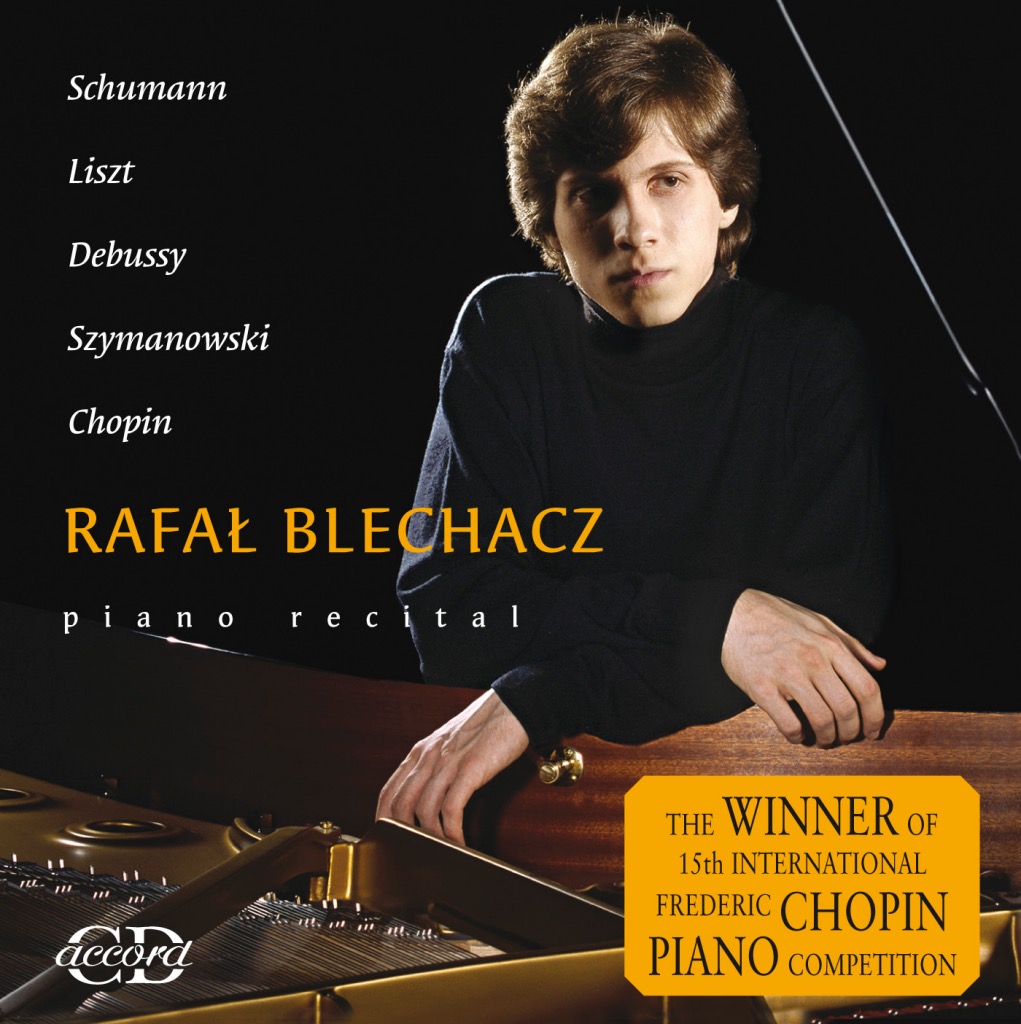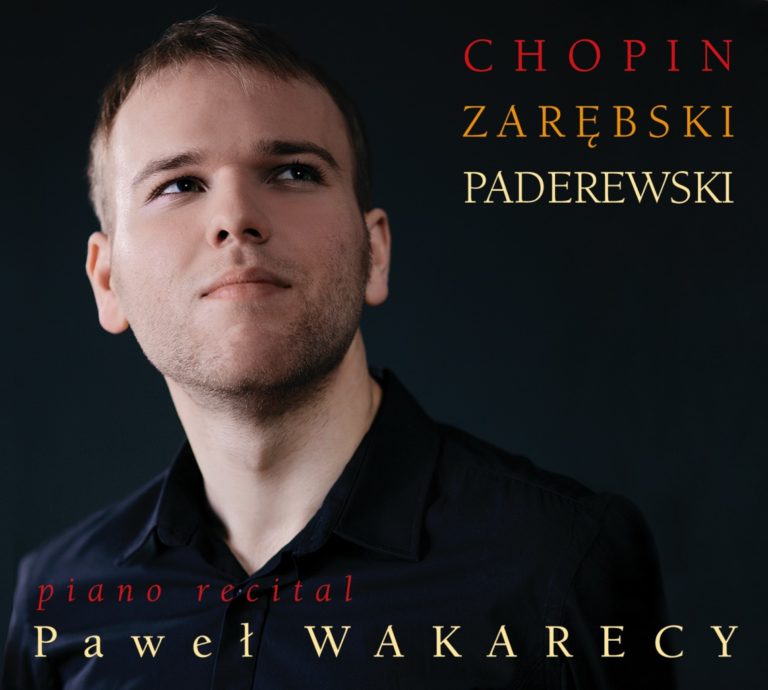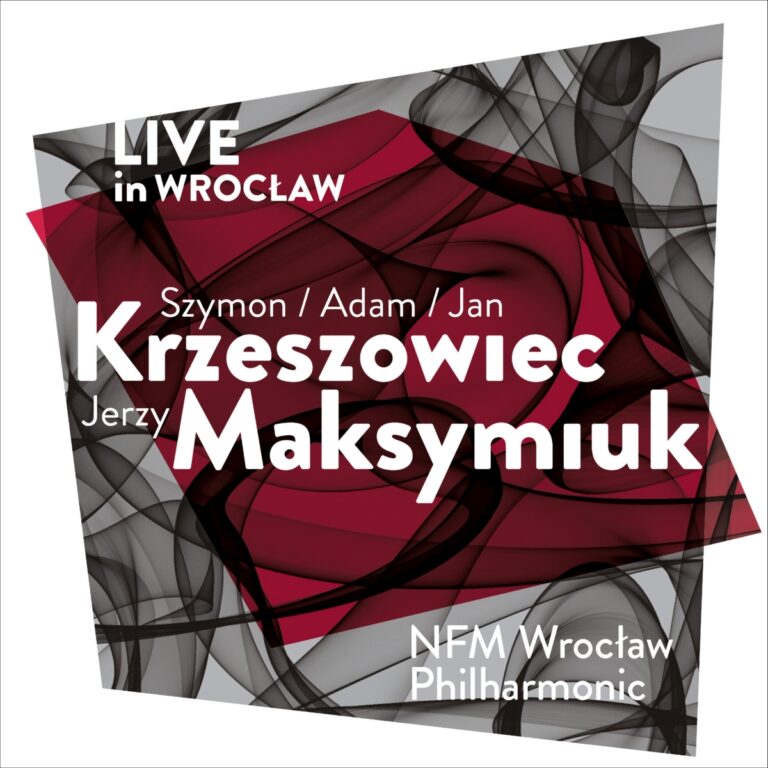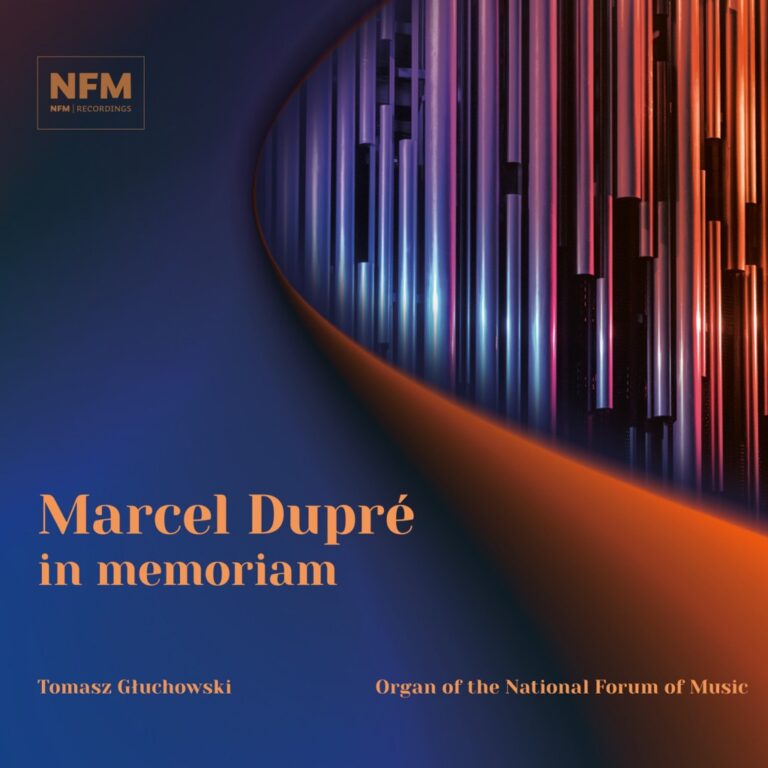
Rafał Blechacz - Piano Recital
The Romanticism saw a bountiful development of piano music. It was a century which brought not only an abundance of works by the most distinguished composers Chopin, Schumann, Liszt, and others but also added lustre to the century that followed. 20th-century composers could hardly ignore the achievements of the previous age, even if they were sometimes critical of them. It was, in fact, this very act of rebellion and rejection of the Romantic aesthetic that set many of them on their way up to the peak of the musical Parnassus. But even in the art of these rebels one can come across some important works illumined by a seductive romantic radiance. The history of music depends on the mutual interpenetration of styles, trends and aesthetics, from those radically rejecting the past to those freely drawing on its heritage.
Of Robert Schumann s three completed piano sonatas, Sonata in G minor seems to be the closest to the Classical form. Schumann looked up to the author of the Hammerklavier as the unequalled master of the sonata cycle; no wonder then that from the very first bars it sparks off the association with some majestic compositions by Beethoven and Schubert. The Classical roots of the Sonata in G minor are evident in its four-part design, as well as the structure and character of each movement: the fast first movement in the sonata form, followed by a lyrical slow part in the ABA form, then a Scherzo and, at the end, a virtuoso Finale.
It took Schumann as long as six years (1833-38) to work out the final form of the sonata, and the course which this work took was quite unusual. He began with the slow movement, which quoted his own song Im Herbste of 1828. The text, by Justinus Kerner, praises the feelings of a man in love. Though Schumann dedicated the whole Sonata to his friend Henrietta Voigt, a pianist from Leipzig, it was certainly not to her that he addressed his feelings. It was Clara Wieck who was then constantly in his mind and who was to play a significant role in the composition of the Sonata in G minor.
Having quite swiftly completed the song-based Andantino, the composer spent the next three years grappling with movements one and three, dated 1833 in the manuscript; he also wrote the original version of the Finale in that period (1835). In 1838 he made some improvements in movement one and could have accepted the sonata as a finished work, had it not been for Clara Wieck. In March 1838, she sent Robert her basically favourable review, stating with much satisfaction that she had found no unclear or incomprehensible elements [Unverständlichkeit] in this piece, as this was what Schumann s compositions were then frequently criticised for. Her only reservation but a major one it was concerned the final Presto passionato, which in her opinion had a negative bearing on the reception of the whole because of its excessive, disproportionate weight. The composer took this remark to heart and at once got down to writing a new, shorter finale in the Classical rondo form with an extensive cadential coda. It was in this version that the Sonata in G minor was published in the following year.
A lively texture with a strong forward drive prevails in this work. The Andantino in C major, written in the style of a romance, is a rare oasis of melodious narration among the vast expanses of turbulent music. The Andantino is a song of lyrical, spiritual nature, sung quietly, in a half-whisper. The remaining parts earned the composition the undoubtedly rather unfair name of a sixteenth-note or semiquaver sonata . Most misunderstandings, even provoking derisive remarks, arose around the descriptions of the tempi in movement one. Already the initial directions seem to defy all Classical moderation, or even common logic, encouraging bravado instead: So rasch wie möglich, which is usually interpreted to mean as fast as possible . But already on the next page, Schumann calls for playing schneller faster , and at the beginning of the coda he demands the impossible: noch schneller still faster . What should one make of these? Can Schumann be suspected of extreme carelessness or inconsistency? This apparent paradox can be explained when the word rasch is properly interpreted as determined and dogged , which describes the pianist s courage with which he plunges into the surging waves of music. This was certainly how Wilhelm Kempf understood this direction, and he provided us with a model interpretation which strikes the right balance between the pace of narration and the construction of a clearly outlined internal drama, animated by a powerful drive forward .
The narrative motion in this movement is, undoubtedly, swift, and the recurring ostinato rhythmic structure seems greatly to facilitate this rapid movement. The music stuns and astounds, even if the tempo is not unreasonably hurried, mostly by virtue of its texture. In this respect, the new finale is a balanced and symmetrical component of the overall form. Sections full of radiance, vigour and energy, set in motion with the inexhaustible energy of a musical perpetuum mobile, are interspersed with moments of soothing tranquillity, which call for a sensitive pianist capable of flexibly using these contrasts. The festive Scherzo does not depart from the dominant tone; its forward pulse and pithy format bring this movement close in expression to to the cycle Carnival Op. 9. This third movement also introduces the element of dance, now swashbuckling, now demonic. If, then, the Sonata in G minor is in many ways indebted to Classicism, it also demonstrates distinct traits of the young Romanticism. Such a stylistic polarity reflects the struggle evident in all of Schumann s sonatas. In an attempt to break free from the manacles of Classical form which fettered his truly Romantic spirit, he always eventually escaped into the caprice or the fantasy. It may also, perhaps, have reflected the ardour of his love for Clara Wieck, his future wife.
The Sonata Op. 22 has another, clearly Romantic quality. It reflects the conflict of two radically opposed personalities, so characteristic of Schumann s writings on music, personified in the figures of Eusebius and Florestan a critical debate, frequently and readily transposed by Schumann into the purely musical sphere of sounds.
Studies had a special place among the works written by Romantic virtuosi. In a condensed form, they presented a musical showcase for their author: not only his mastery of instrumental performance technique, but also his abilities as a composer, his creativity and the art of making a metaphoric statement in a miniature form. There is no doubt that Chopin and Liszt redefined the concept of piano writing by their achievements in this genre, which had an impact in their own and later times.
In 1848, Liszt completed his Les Trois Études de Concert (S. 144), an important cycle in the history of this genre. By that time, Liszt had already had several study collections to his name, including the most significant one: the first series of three Studies on themes by Paganini. The Concert Studies were first published as Trois Caprices Poetiques, bearing such expressive titles as Il Lamento, La Leggierezza and Un Sospiro. Though the influence of Chopin is still noticeable in these pieces, the Concert Studies are longer, more complicated and internally diversified than Chopin s works. Of the three Concert Studies, the last two are most readily performed, while the first Leggierezza has largely been forgotten.
La Leggierezza, as recorded on this album, is a whirling and meandering stream of fine, meticulously elaborated figurations, carefully moulded and imbued with a subtle drama. The affinity to Chopin is most clearly evident here.
Fifteen years later, the Hungarian virtuoso published another two Concert Studies (S. 145): Gnomenreigen (A Gnome Pageant) and Waldesrauschen (Forest Whispers), two unsurpassed masterpieces of this genre which enjoyed an almost instant, enormous popularity. Gnomenreigen, a capricious, vigorous scherzando can be seen as a perfect test for a light manner of playing and a subtle toucher. Liszt clearly enjoys making the performer cross his hands, which does not facilitate the smooth flow of the music and makes it even harder to attain a delicate sound of the meandering melodic line. Forest Whispers was composed with exceptional finesse; the melody is coupled with a gently fluctuating accompaniment. Waldesrauschen appears to have been a pioneering work for the colorist treatment of the piano, a harbinger of the sound exploration which took place in the work of Debussy and Ravel.
The luxuriant art of the mature Romanticism in the 2nd half of the 19th century was a point of reference for composers writing at the start of the next century. Though 20th-century art developed in many different directions, the Romantic aesthetic, later criticised, repudiated and rejected, was in fact its point of departure. Karol Szymanowski’s and Claude Debussy’s musical development followed the same pattern.
Debussy s Suite Bergamasque, completed in its final form in 1905 plays with conventions. The Suite makes subtle reference to the Rococo ornamentation applied by 17th-century French harpsichord masters and to the archaic form of the suite, though harmonically it still looks back to the Romantic world. The four-part Suite Bergamasque is also the result of Debussy s recurrent fascination, even enchantment, with the poetry of Paul Verlaine. It was this poetry that inspired the Suite, whose title was borrowed from the first verse of Verlaine s poem Clair de lune, from the collection Fêtes galantes. The poet, in his turn, was inspired by Watteau s idealised landscapes populated by characters from commedia dell arte. These characters: the Harlequin, Goribus, Pantalone were destined to find their homeland in Bergamo, Lombardy hence the bergamasca.
Suite Bergamasque is one of Debussy s most fascinating and frequently performed piano works. It begins with a Prelude in F major. Tempo rubato and an accumulation of contrasts in sound and dynamics contribute to the powerful effect of this opening part. The Minuet begins on a humorous note, but the composer soon evokes a mysterious, enigmatic mood. Clair de lune originally entitled Promenade sentimentale is the best known part of the Suite. Pastel colours and a delicate sound texture make it possible to maintain pianissimo dynamics nearly throughout the duration of this part, which draws to a magic close. The final Passepied (which replaced the stately Pavane from the composer s original design) brings to mind a carefree play, but this mood gives way when the music enters the C minor key. The whole ends with the return of an ethereal pianissimo.
In the early years of the 20th century, during his studies in Warsaw, Karol Szymanowski was taking his first steps as a composer and still drawing freely on the previous century s heritage. In 1901-1903, he composed his Variations Op. 3, whose theme Szymanowski s original invention is exceptionally beautiful, promising for the pianist and well suited to the requirements of the form. Szymanowski does not, in fact, exploit the full potential for the development of this theme. The Variations themselves, though conventional at some points, also contain many fresh, innovative ideas. The composer treats the variation form with much freedom, frequently using only a section of the theme and departing largely from the theme s harmonic structure, which makes the role of the theme as the backbone of the form quite relative. An idea which gave promising results was the introduction of a mazurka rhythm in Variation III a foreshadowing of the composer s future fascinations which led him to write the unparallelled Mazurkas. The waltz rhythm was also used in this variation cycle, and the quasi-polyphonic structure of Variation X was clearly inspired by Chopin.
Chopin s Polonaise in A flat major is a quintessence of the Polish Romanticism possibly even in inverted commas, as a consciously exaggerated stereotype enhanced by numerous visualisations and quasi-literary descriptive passages. Heroic hymns of battle , the phrase used by the American musicologist James Huneker to describe Chopin s polonaises, is undoubtedly most suitable with reference to the A flat Polonaise Op. 53, published in 1843. Here is no psychical presentation, but an objective picture of battle, of concrete contours […] , claims Huneker. And yet woe to him who, carried away by the rage of the battle, will squander the dynamic and emotional potential of the piece in the first few bars. The Polonaise in A flat major calls for a major economy in the use of means of expression, lest they should lead to disastrous exaggeration. Particularly the middle part, based on an octave accompaniment in the left hand and leading to a unique, mysterious intermezzo between the trio and the reprise, requires a special strategy from the performer.
Andrzej Sułek
Translation: Tomasz Zymer
Reviews:
MusicWeb
ROBERT SCHUMANN (1810-1856)
Sonata in G minor op. 22
1. So rasch wie möglich 5:02
2. Andantino 4:36
3. Scherzo. Sehr rasch und markiert 1:45
4. Rondo. Presto 5:31
FRANZ LISZT (1811-1886)
Concert Studies
5. Waldesrauschen (S. 145) 4:08
6. La Leggierezza (S. 144) 4:48
7. Gnomenreigen (S. 145) 3:02
CLAUDE DEBUSSY (1862-1918)
Suite Bergamasque
8. Prélude 4:20
9. Menuet 4:25
10. Clair de lune 5:01
11. Passepied 3:38
KAROL SZYMANOWSKI (1882-1937)
Variations in B flat minor Op. 3
12. Tema. Andantino tranquillo e semplice 1:09
13. Var I L’istesso tempo 1:08
14. Var II Agitato 0:28
15. Var III Andantino quasi tempo di mazurka 1:06
16. Var IV Con moto 0:19
17. Var V Lento dolce 0:59
18. Var VI Scherzando, molto vivace 0:11
19. Var VII Allegro agitato ed energico 0:23
20. Var VIII Meno mosso. Mesto 1:20
21. Var IX Maggiore. Tempo di valse. Grazioso 0:49
22. Var X Andantino dolce 0:37
23. Var XI Andantino dolce affetuoso 1:36
24. Var XII Allegro con fuoco 1:56
FRYDERYK CHOPIN (1810-1849)
25. Polonaise in A flat major Op. 53 6:58
Total time: 66:04



